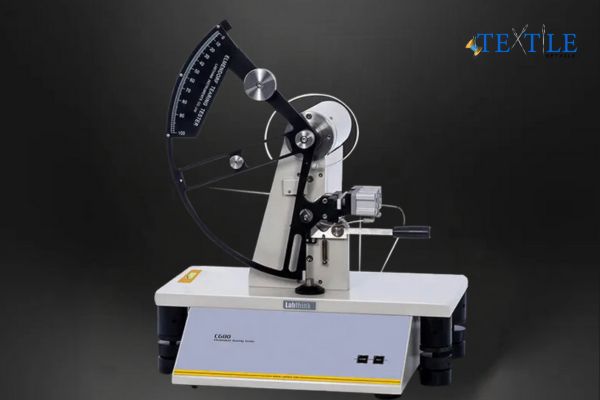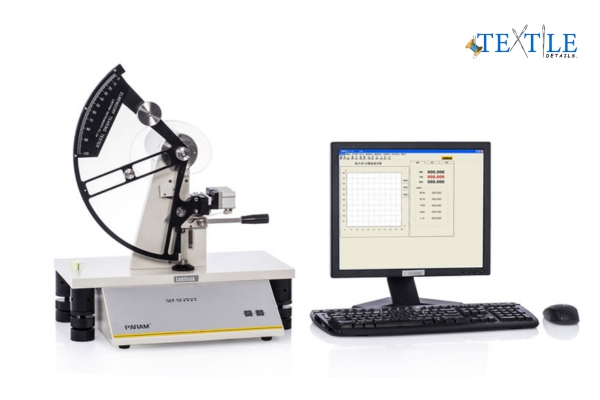When it comes to material testing, the Elmendorf Tear Tester plays a significant role in assessing the tear resistance of various materials. This testing equipment measures the force required to initiate and propagate a tear in a sample material. By evaluating tear strength, manufacturers and researchers can determine the durability and quality of materials used in industries like packaging, textiles, and plastic manufacturing. Understanding the Elmendorf Tear Tester and its importance in material testing is crucial for ensuring the reliability and performance of products in various applications.
What is Elmendorf Tear Tester?
The Elmendorf Tear Tester is a widely used instrument in material testing. It is specifically designed to measure the tear resistance of various materials, including films, paper, textiles, and non-woven fabrics. This testing method helps in assessing the material’s ability to withstand tearing forces, providing valuable insights into its quality and durability.
The tear strength of a material is an essential characteristic that determines its performance in real-world applications. Whether it is packaging materials, garments, or industrial textiles, knowing the tear resistance of a material is crucial for manufacturers, designers, and quality control personnel.

The Elmendorf Tear Tester operates on the principle of pendulum impact. The instrument consists of a pendulum with a defined weight that swings freely. The material sample is clamped securely, and the pendulum’s blade punctures it, initiating the tear. The pendulum’s energy and the force required to propagate the tear are measured and recorded.
This tear-testing method offers several advantages. It provides a quick and reliable way to evaluate the tear strength of materials and ensures consistent and repeatable results. The Elmendorf Tear Tester also allows for testing specimens in different orientations, enabling assessment of both the machine direction (MD) and cross-machine direction (CD) tear resistance.
Understanding the tear resistance of materials is vital for manufacturers to ensure product quality, optimize material selection, and meet industry standards. By using the Elmendorf Tear Tester, manufacturers can make informed decisions about materials, improve product design, and enhance overall customer satisfaction.
Working Principle and Components of the Elmendorf Tear Tester
The Elmendorf Tear Tester is a widely used instrument in material testing to measure the tear resistance of various materials. It operates based on a simple working principle and consists of several essential components.
The working principle of the Elmendorf Tear Tester is based on the pendulum principle. The instrument utilizes a pendulum with a knife-shaped blade that is released from a fixed height to strike and tear the material being tested. The amount of energy required to tear the material is measured and used as an indicator of its tear resistance.

The Elmendorf Tear Tester consists of the following components:
- Pendulum: The pendulum is a critical component of the tester. It is a weighted arm that swings freely and carries the knife-shaped blade. The pendulum’s weight and the height from which it is released determine the energy applied to the material.
- Knife Blade: The knife blade is attached to the pendulum and is responsible for cutting and tearing the material. It has a sharp edge that ensures efficient tearing of the specimen.
- Specimen Clamp: The specimen clamp securely holds the material being tested in place. It ensures that the material remains flat and taut during the tear testing process, allowing accurate tear resistance measurements.
- Reading Scale: The reading scale is used to measure and display the tear force required to tear the material. It is calibrated to provide precise tear resistance values in appropriate units.
- Sample Cutter: The Elmendorf Tear Tester is often accompanied by a sample cutter. The sample cutter is used to prepare standardized specimens of specific dimensions for testing. It ensures consistency in the size and shape of the materials being tested.
By understanding the working principle and components of the Elmendorf Tear Tester, material testing professionals can effectively evaluate the tear resistance of various materials. The instrument’s accuracy, reliability, and ease of use make it an essential tool in industries such as textiles, paper manufacturing, packaging, and more.
Importance of Tear Testing in Material Evaluation
Tear testing is a critical aspect of material evaluation, providing valuable insights into the strength and durability of materials. By subjecting materials to tearing forces, tear testing helps in determining their resistance to tear propagation and their ability to withstand external stress.
One of the key reasons why tear testing is important in material evaluation is its ability to assess the suitability of materials for various applications. Different industries require materials with specific tear resistance properties, and tear testing helps in identifying materials that meet these requirements. For example, tear testing is crucial in the textile industry to ensure that fabrics used in garments can withstand the rigors of daily wear and tear.

Tear testing also plays a vital role in quality control during the manufacturing process. By conducting tear tests on samples from production batches, manufacturers can identify any variations in tear strength and take corrective measures. This helps in maintaining consistent product quality and preventing the distribution of defective materials to customers.
Furthermore, tear testing is essential in research and development of new materials. It allows scientists and engineers to evaluate the tear resistance of different formulations and structures, aiding in the design and improvement of materials for specific applications. By understanding the tear properties of materials, researchers can develop innovative solutions that address the needs of various industries, such as tear-resistant packaging materials or tear-proof protective equipment.
In addition to its importance in material evaluation, tear testing is also crucial for compliance with regulatory standards and industry specifications. Many industries, including automotive, aerospace, and construction, have specific tear resistance requirements that materials must meet to ensure safety and performance. By conducting tear tests, manufacturers can ensure their materials comply with these standards and deliver products that meet customer expectations.
Applications of the Elmendorf Tear Tester in Various Industries

The Elmendorf Tear Tester is a critical tool in material testing and finds applications in various industries. Its versatility and accuracy make it an indispensable instrument for evaluating tear strength and resistance in different materials. Some of the key industries where the Elmendorf Tear Tester is widely used are:
1. Packaging Industry
In the packaging industry, the Elmendorf Tear Tester is used to determine the tear strength of different packaging materials such as paper, cardboard, plastic films, and laminates. By measuring the tear resistance, manufacturers can ensure that their packaging materials can withstand the rigors of transportation, handling, and storage without tearing or compromising the contents inside.
2. Textile Industry
Textile manufacturers utilize the Elmendorf Tear Tester to assess the tear strength and durability of fabrics, such as woven, knitted, or non-woven materials. This helps in determining the suitability of the fabric for various applications, including clothing, upholstery, and industrial textiles. By understanding the tear resistance, manufacturers can ensure their fabrics meet the required standards and can withstand wear and tear in different environments.
3. Automotive Industry
In the automotive industry, the Elmendorf Tear Tester plays a crucial role in evaluating the tear resistance of interior automotive materials, such as upholstery, seat covers, headliners, and carpeting. This ensures that these materials can withstand the wear and tear associated with daily use, maintaining their integrity and appearance over time.
4. Construction Industry
The Elmendorf Tear Tester is also valuable in the construction industry for assessing the tear strength of building materials like roofing membranes, geotextiles, and insulation materials. By evaluating the tear resistance, manufacturers and builders can determine if the materials can withstand harsh weather conditions, impacts, and other potential causes of tearing.
5. Packaging Material Manufacturers
Packaging material manufacturers themselves extensively use the Elmendorf Tear Tester to ensure the quality and reliability of their products. By conducting tear strength tests, manufacturers can identify any weaknesses in their materials and make necessary improvements to meet customer expectations.
These are just a few examples of how the Elmendorf Tear Tester finds applications in various industries. Its ability to accurately measure tear strength enables manufacturers to produce high-quality materials that can withstand the demands of their respective industries.
Factors Affecting Tear Strength and Interpretation of Test Results
Tear strength is a critical property that determines the resistance of materials to tearing forces. Several factors can affect tear strength, and understanding these factors is essential for accurate interpretation of test results.

1. Material composition: The tear strength of a material is influenced by its composition. Different materials exhibit varying levels of tear resistance due to differences in their molecular structure and bonding.
2. Thickness: Thicker materials generally possess higher tear strength as they provide more resistance to tearing forces. However, the tear strength may reach a plateau beyond a certain thickness, indicating that further increasing the thickness does not significantly enhance tear resistance.
3. Directionality: Tear strength can vary depending on the direction in which the force is applied. Anisotropic materials, such as textiles or laminates, may exhibit different tear strengths along different directions. Therefore, it is important to consider the orientation of the tear during testing and analysis.
4. Sample preparation: The preparation of the test specimen can affect tear strength results. Factors such as sample cutting technique, sample size, and conditioning can introduce variations in tear strength measurements. It is crucial to follow standardized sample preparation procedures to ensure consistent and reliable results.
5. Testing conditions: The testing environment and parameters, such as temperature, humidity, and speed of the Elmendorf Tear Tester, can impact tear strength. These conditions should be controlled and documented to ensure reproducibility and comparability of test results.
Interpretation of test results: When analyzing tear strength test results, it is important to compare them with established standards or specifications for the specific material or application. Deviations from the expected tear strength can indicate potential weaknesses or inconsistencies in material quality or performance.
Understanding the factors influencing tear strength and properly interpreting test results enables manufacturers, researchers, and quality control professionals to make informed decisions regarding material selection, process optimization, and product development.
Conclusion
In conclusion, the Elmendorf Tear Tester is a crucial tool in material testing. Its ability to accurately measure and quantify the tear strength of various materials helps manufacturers ensure the quality and durability of their products. By subjecting materials to controlled tearing forces, the tester provides valuable data that can be used to improve product design and prevent failures in real-world applications. Whether it’s assessing the tear resistance of packaging materials, textiles, or films, the Elmendorf Tear Tester plays a vital role in ensuring the reliability of materials used in various industries. Its importance in quality control and product development cannot be overstated, making it an indispensable instrument for material testing laboratories.

Monjurul Hasan, An On-Page SEO Expert on WordPress. Study in Automobile & Textile Engineering at Bangladesh Sweden Polytechnic Institute (BSPI). Having 3+ years of experience in Automobile and Technical Textile Products. Working at Upwork & Fiverr MarketPlace . Highly interested in technical product development and fashion forecasting.
